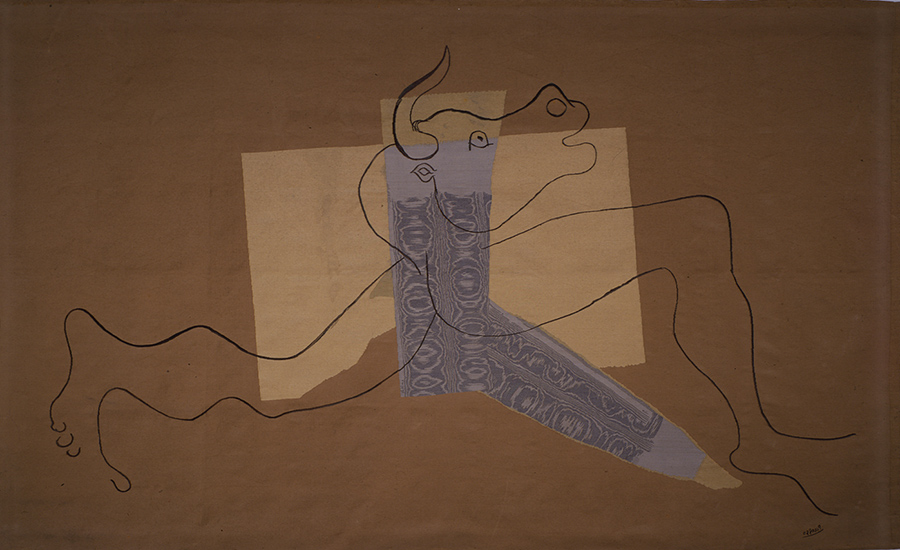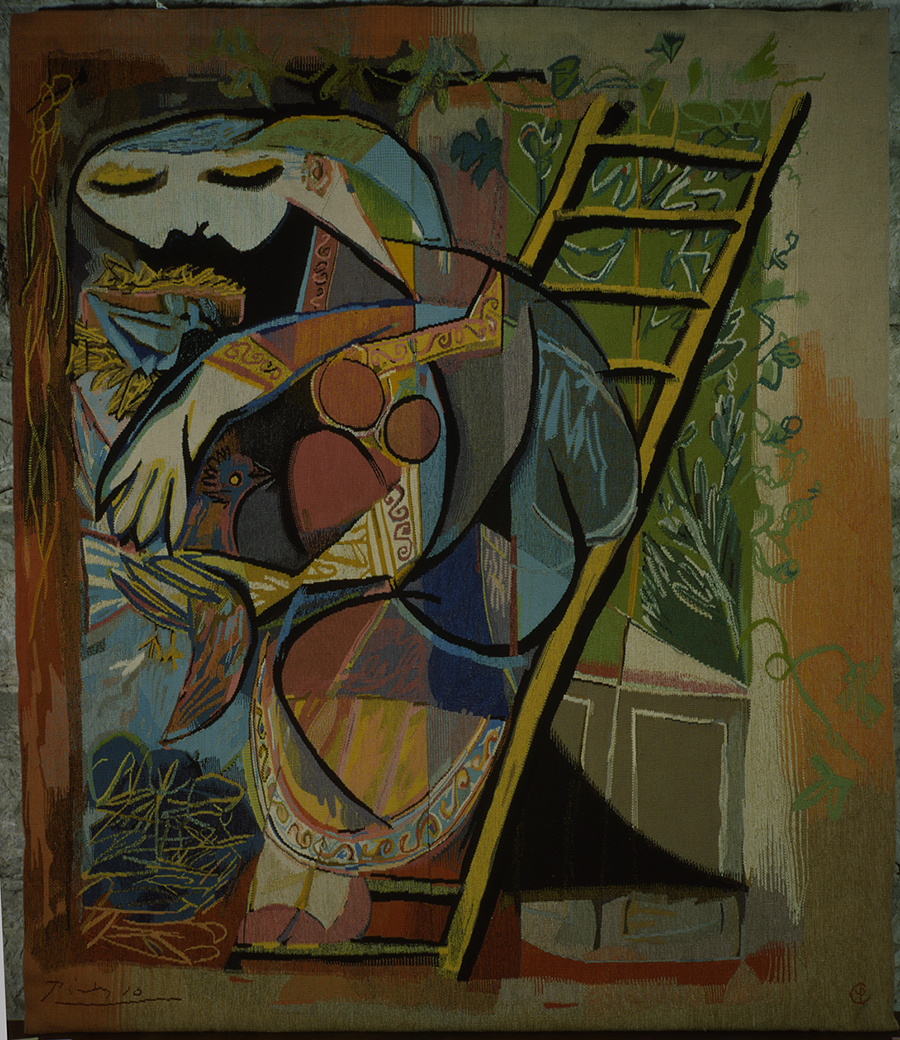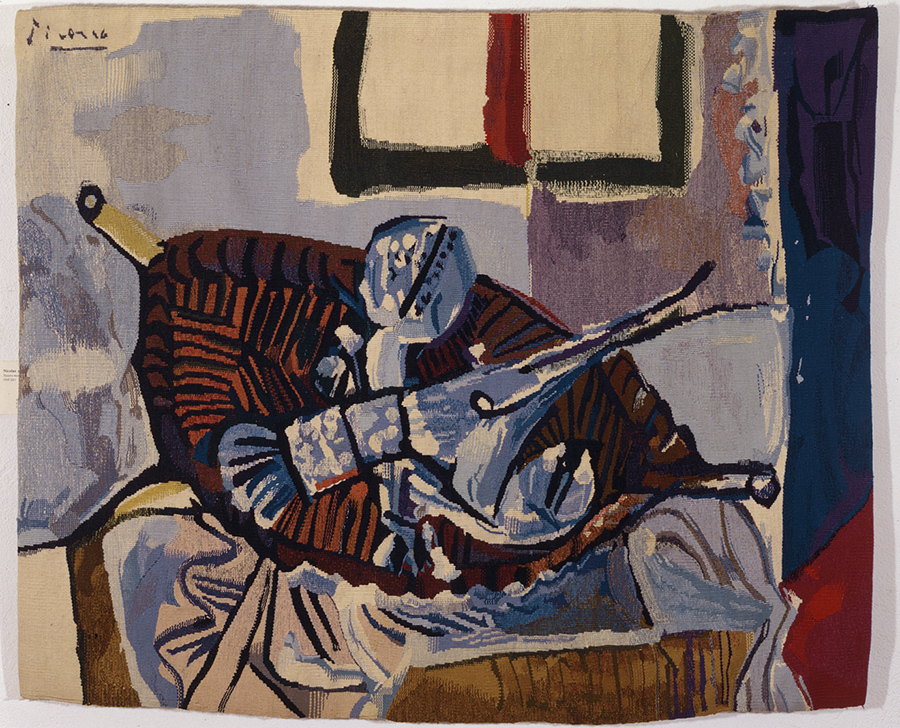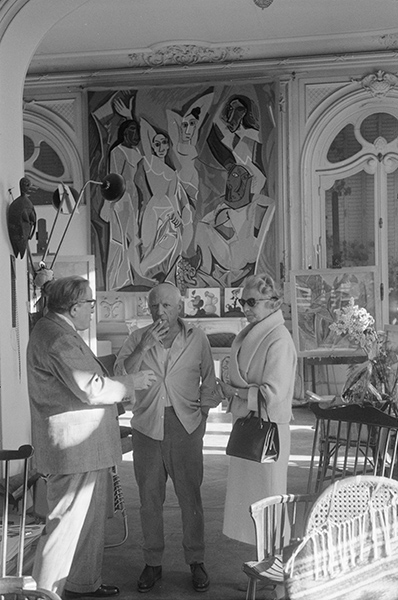Jeanne Bucher lived in the gallery, where the first exhibition showcased Henri Laugier's collection. It included works by Georges Braque, Raoul Dufy, Fernand Léger, Jean Lurçat, Louis Marcoussis, Joan Miró, Pablo Picasso, Maurice Utrillo, and many others. One show followed the next for three consecutive years, until the women's paths parted in 1941. During this period, Marie Cuttoli was on very good terms with Albert C. Barnes, who supported her. Thanks to this famous collector's contacts, she managed to show a large selection of her tapestries in the United States. With this aim in mind, she moved to New York, escaping from Paris and France, which were in the midst of the turmoil of war. Henri Laugier, whom Jean Perrin named director of the French national educational research service in 1936, joined her. In fact, aware that France was lagging behind in terms of research, Laugier focused his efforts on founding the CNRS (the French National Center for Scientific Research), for which he became the first director. However, after his dismissal by the Vichy government in July, 1940, he was forced to go into exile, first to the United States and then to Canada. His work was exemplary in science and in politics alike, fighting for General de Gaulle's "Free France." This forced parenthesis allowed them to save their tapestry collection, thanks to several exhibitions organized by Grace McCann Morley, and part of their other works. In 1943, General de Gaulle called Laugier to Algeria, where he was appointed dean of the university. In 1946, he became the Assistant Secretary-General for the United Nations Department of Social Affairs, before becoming one of the authors of the Universal Declaration of Human Rights adopted on December 10, 1948.
After the end of the war, Marie Cuttoli returned from Algeria to recover the apartment on rue de Babylone and, jointly with Jean Cassou, organized an exhibition of French tapestry at the Modern Art Museum. In 1946, the Cuttoli-Laugiers were also able to return to their villa near Antibes, where Picasso met them again, accompanied by Françoise Gilot. That was the summer when Picasso rented a small house, the Pour Toi villa, on the port of Golfe-Juan, where there was not enough space for him to work. According to Picasso's confidant and secretary Jaume Sabartés, that was when Romuald Dor de la Souchère, the curator of the Antibes museum, "one day, at the beach, had the idea of asking him for a small drawing for the museum." He offered Picasso the use of part of the castle as a studio, specifically the large hall known as the guards' hall, in the south wing of the upper floor. Picasso was thrilled, and decided to decorate the museum ("I'm not just going to paint for myself here. I'm going to decorate the second floor."[1] He worked at the castle from mid-September to mid-November. The artist left twenty-three paintings and forty-four drawings on deposit with the city council of Antibes, and Marie ably turned the deposit into a donation. Jointly with Laugier, she was the instigator of what would become the Picasso Museum at Antibes, to which she would in turn donate several Picasso tapestries, including La Fermière and Le Homard.
[1] Françoise Gilot, Vivre avec Picasso, éditions Calman-Lévy, 1965








 Summary
Summary